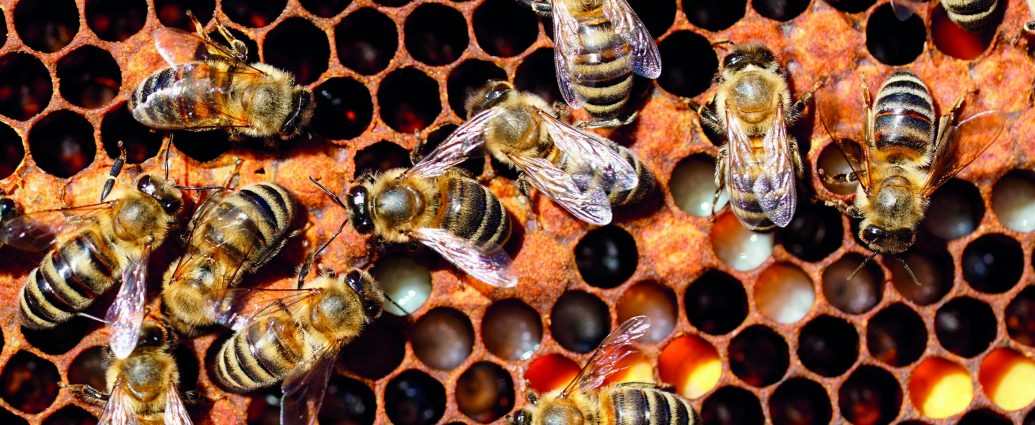Have you ever wondered what all the bugs you see in your garden are doing? Head of horticulture at the Soil Association in the UK and dad-of-two Ben Raskin explains how these tiny heroes actually help put food on our plates…
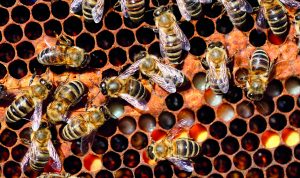
A garden is a magical place: beautiful, full of lovely food, a play park and even your own private zoo. If you garden with nature you will attract lots of fascinating creatures and, even better, most of them will help you in the garden. They will pollinate your fruits and vegetables, control pests and diseases and even get rid of your organic rubbish.
Bees are great pollinators and can pollinate about 30 per cent of our food crops.
Bumblebees are particularly good at pollinating because they have very hairy bodies that trap pollen. Each individual hair even has a ‘fork’ at the end to help. Plus, the vibration from their loud buzzing helps release the pollen from flowers, which is known as ‘buzz pollination’. The bee eats some of this pollen but a lot also ends up on other flowers and pollinates them.
As well as making honey, honeybees do a good job of pollinating. They can visit up to 100 flowers in one feeding trip to collect nectar to make into honey for their winter food store. If you want honey and pollinated flowers, then why not start a hive? Look for a local beekeeping society for advice on how to do it.
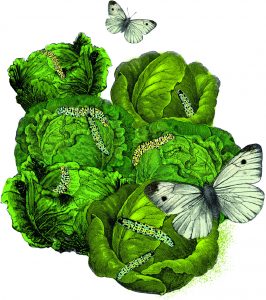
Butterflies are really special. Many of them are, of course, spectacularly delicate and beautiful, but they also go through the amazing process of metamorphosis, turning from usually unremarkable caterpillars into their glorious adult form. Even if we don’t like some of the caterpillars, once they become adult butterflies they are definitely our friends. We think of butterflies as nectar feeders because we see them on our garden flowers but others are not so fussy. Some eat rotting flesh and fruit and even animal dung. Although butterflies are not quite as good at pollinating plants as bees are, they can fly much further, so they help the plant to spread its pollen far away.
There are more species of beetle in the world than any other insect: it is not surprising then that some are garden friends, while others we’d rather do without. Often red or black, the soldier beetle is definitely fighting on our side in the garden. The adults like a bit of pollen and nectar so are useful pollinators; however, they will also eat aphids, so help us with pest control, too. Not only that but the larvae eat a range of insect eggs and will also feast on slugs and their eggs. You can help bring them into your garden by planting flowers they like such as goldenrod, parsley and marigolds. There are more than 60,000 species of rove beetle alone and they live pretty much everywhere. Most of them eat other insects and small creatures so are fantastic for your garden. In particular, some species love slug eggs.
Ladybirds are one of the prettiest beetles. The most common markings are red with black spots but there are many species with different
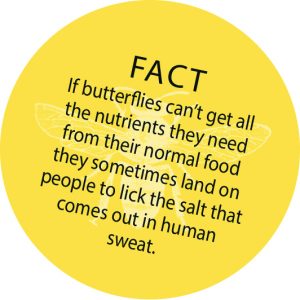 numbers of spots and even different colours. People think ladybirds are lucky and perhaps that is because they really help in the garden as both the adult and larva eat lots and lots of aphids and scale insects.
numbers of spots and even different colours. People think ladybirds are lucky and perhaps that is because they really help in the garden as both the adult and larva eat lots and lots of aphids and scale insects.
Hoverflies, also called flower flies or syrphid flies from their Latin name (Syrphidae), are one of our best buddies in the garden. The adults eat pollen and nectar so they are great for pollinating flowers. The larvae also help; they love munching on aphids and other pests.
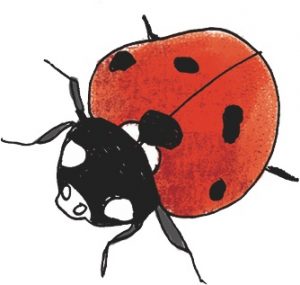
HOW TO MAKE MINI BEASTS WELCOME
You don’t have to spend lots of money creating lovely habitats for garden helpers. Just look around you for natural materials to use. Stones, logs, holes in the ground filled with water, or even just a mound of earth with some grass on top can all make great homes for animals.
In the wild there are often areas of tussocky grass (this means little mounds). Beetles, spiders and other insects love to make homes in these, but we don’t often have them in gardens since we usually like to level out everything and make it flat. Try making a few little earth mounds – they only need to be a few inches high. Sow some grasses mixed with wild flowers on top.
Build a bug apartment block with piles of logs or stones which are wonderful shelters for our garden friends. Some creatures will make permanent homes underneath, while others might just use them for temporary shelter.
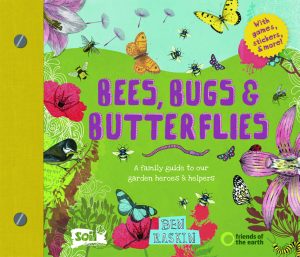
READ MORE: Bees, Bugs & Butterflies: A Family Guide To Our Garden Heroes and Helpers by Ben Raskin (published in association with the Soil Association and Friends of the Earth) is published by Leaping Hare Press RRP £9.99. Illustrations by Tonwen Jones.

